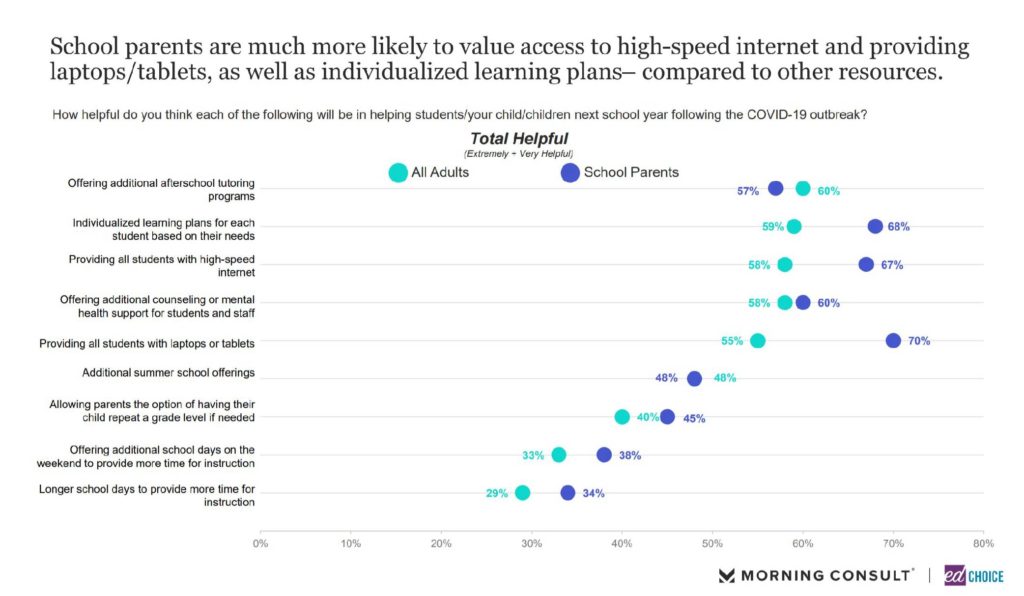EdChoice Public Opinion Tracker: Top Takeaways October 2021
With the 2021-22 school year solidly underway, parents have a better grasp of what they can expect from their schools this year. A wave of COVID-19 outbreaks corresponding with returns to the classroom appear to have subsided for now. A summer of intense debates over As much as ever, we are interested in parents’ perspectives on K-12 issues. It turns out families experiencing the K-12 education system often have perspectives distinct from those on the outside looking in.
We survey a nationally representative sample of American adults every month. From October 12-16, we collected responses from 2,200 adults ages 18 and older. We received 1,121 responses from current school parents, including an oversampling of 700 school parents. This approach allows us to report more reliable information about parents’ opinions by demographic.
In a nutshell: This was a banner month for school choice policies across the board, with education savings accounts (ESAs) receiving support from four out of five current school parents. Positivity about education and the pandemic may be on the rise, even as preferences for mask and vaccine mandates remain stable. Parents tend to be more positive than the general public about various resources and political institutions’ ability to support quality education for their children. While respondents reported COVID was less disruptive generally, about a quarter of parents said they had to quarantine at least one of their children in the last month in response to a COVID-19 outbreak.
1. Positivity about the direction of K-12 education rose for the first time since June. The share of adults who felt like K-12 education was moving in the right direction had been declining slowly since the summer, but in October, that number saw a slight lift. Positivity about one’s local school district rose five points, to 39 percent, and statewide and nationwide education rose two points each. However, positivity remains lower than it was at the end of last school year, and people also appeared to be more optimistic about K-12 education at the beginning of the 2020-21 school year.
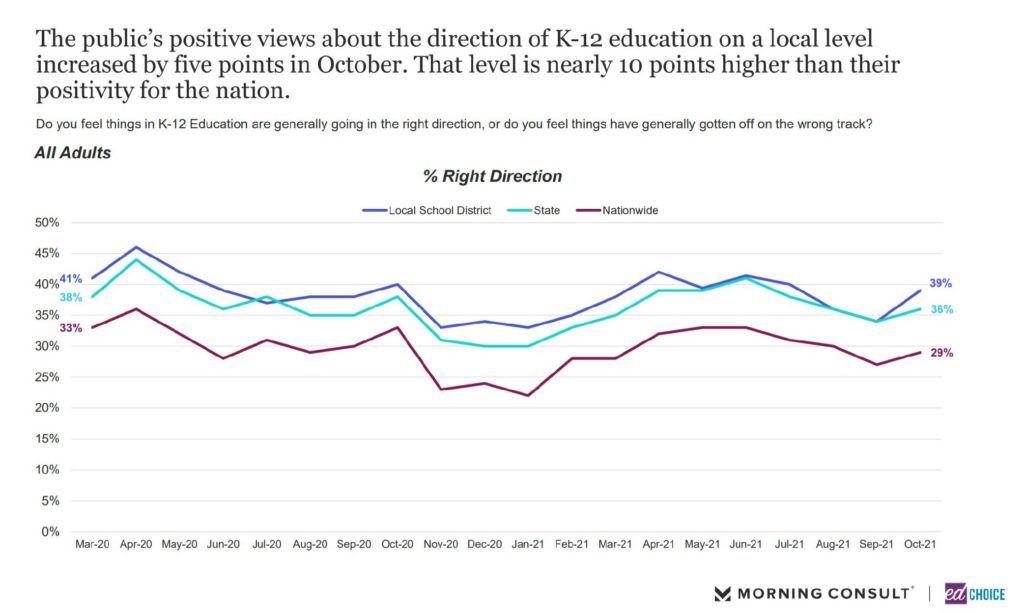
Parents generally are more positive about K-12 education in October, but only regarding the state and local levels. For each level of governance, they are more likely to think education is moving in the right direction than the general population. Like the general public, parents are more positive about K-12 education when it comes to their local district than the country as a whole, but the gap between the two is twice that of all adults (+20 points compared to +10).
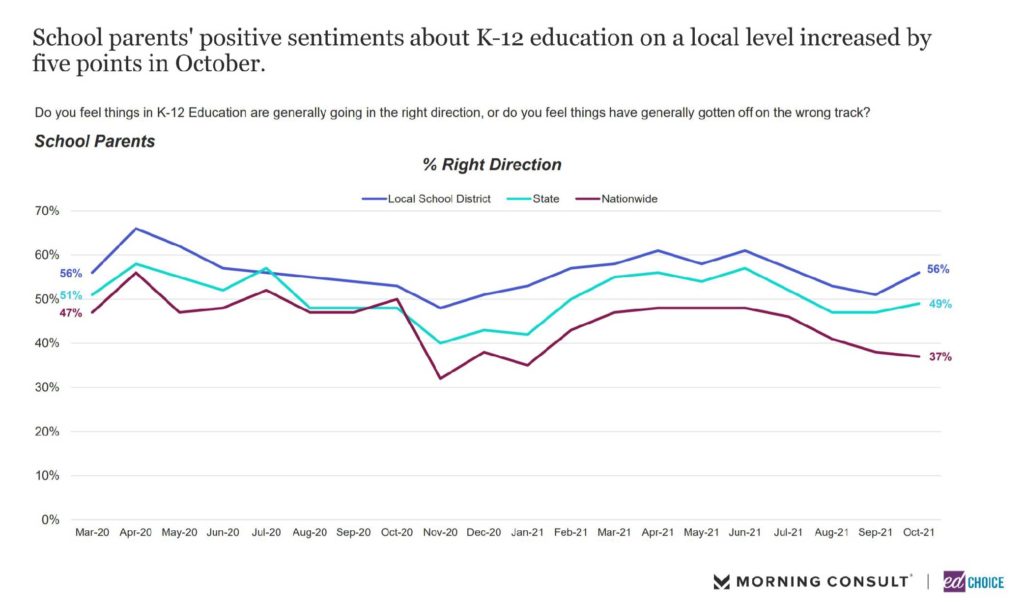
2. Parents give less harsh grades to public institutions’ handling of K-12 education than the general population. School parents were more likely to give political institutions “A” or “B” ratings for their administration of K-12 education matters than the general population. State governors received an “A” or “B” from 43 percent of parents, 12 points greater than the general population. The Biden Administration received an “A” or “B” from 40 percent of parents (+11 points compared to the general population), local school boards received 48 percent “A” and “B” responses (+16 points), and state legislators reached 37 percent (+12 points). School boards receive the lowest percentages of “D” and “F” grades of parents and other adults. Particularly, parents giving positive grades outnumber those giving negative grades by 30 percentage points, the highest margin seen for this question.
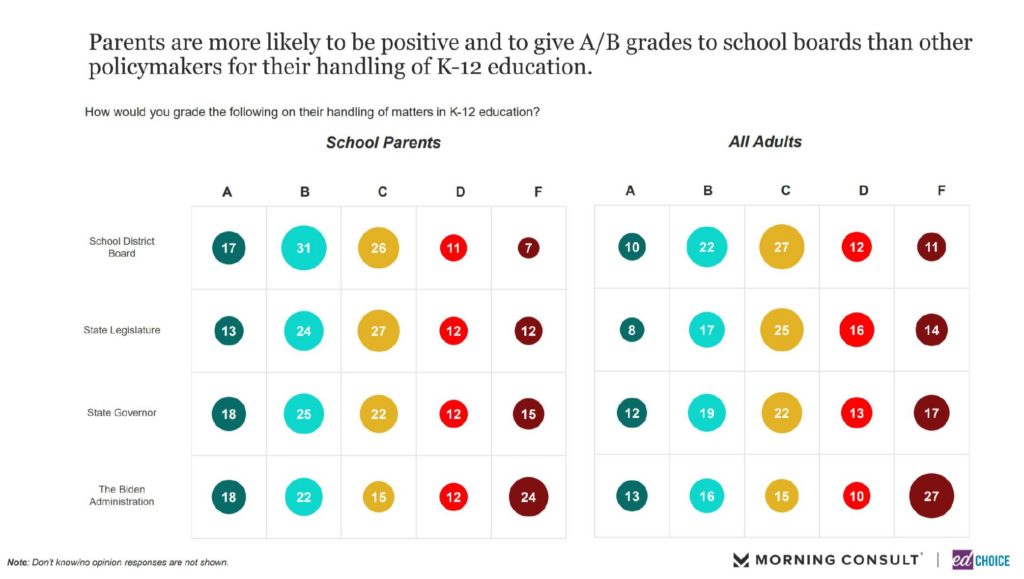
3. Support for school choice is on the rise. Seventy percent of adults and 80 percent of parents support education savings accounts (ESAs). Notably, strong support among school parents for ESAs jumped seven percentage points in October, and total support among the general population rose five points. High-income individuals, young people, Hispanics, and Democrats were especially likely to support ESAs.
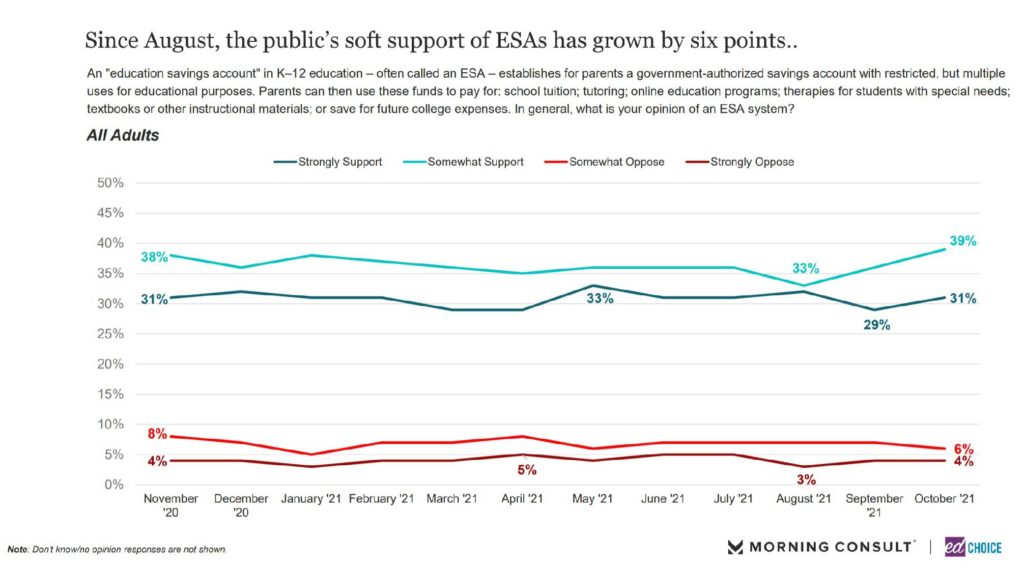
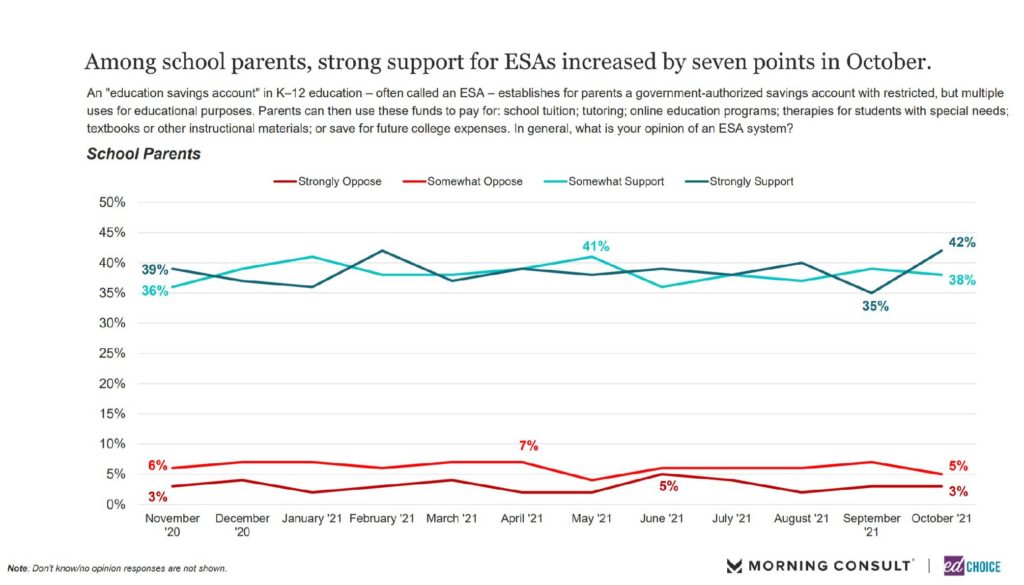
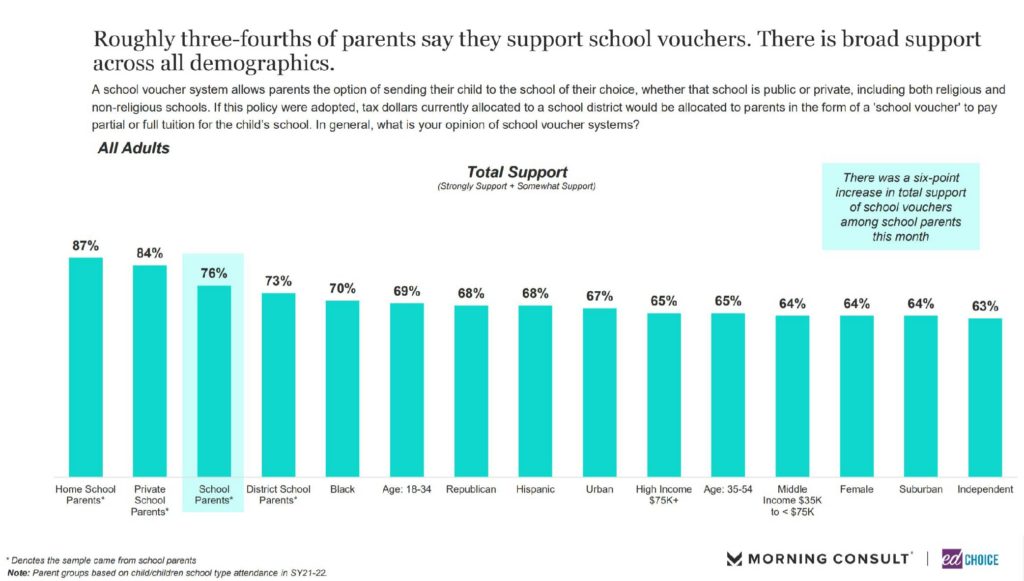
Other forms of school choice grew in popularity from September to October. Sixty-four percent of the general population and 78 percent of parents support school vouchers, a six and eight point increase, respectively.
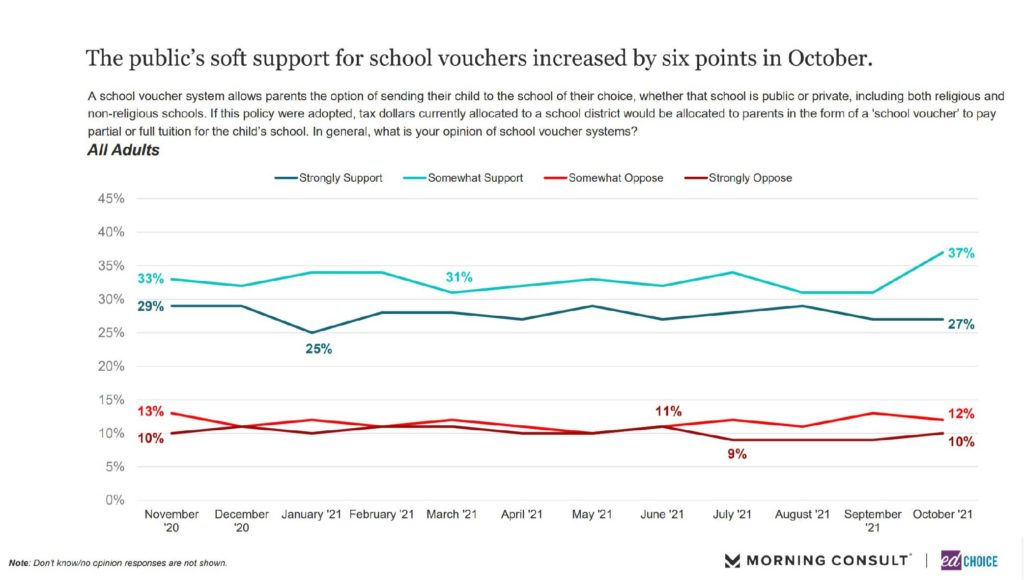
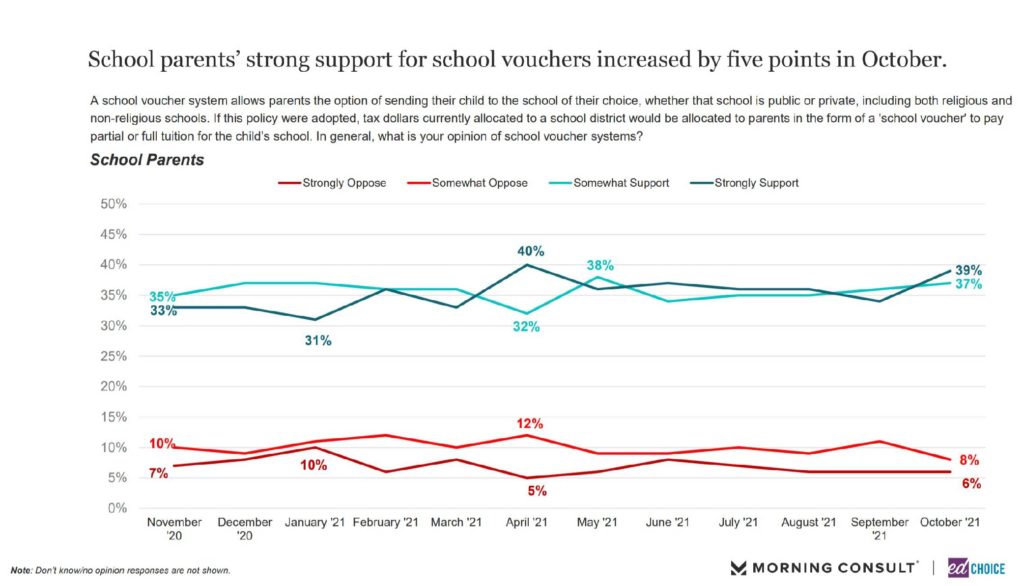
Charter schools also grew in popularity. Support among the general population increased 6 percentage points, to 67 percent, and support from parents increased five points, to 75 percent.
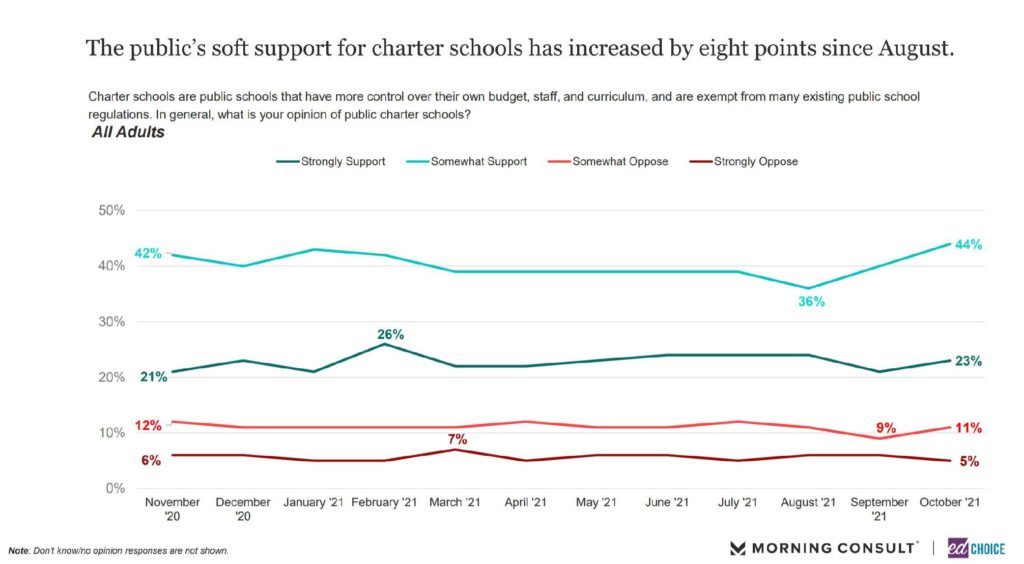
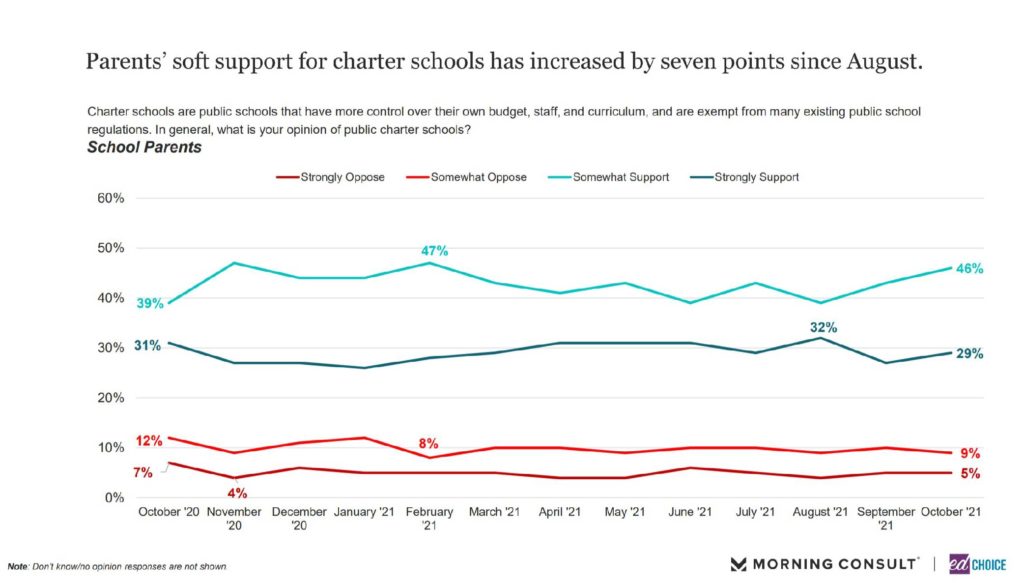
4. COVID-19 appears less disruptive to people’s lives in October… The respective shares of adults who felt the pandemic was “very disruptive” to their communities, personal routines, and household routines hit their lowest points in July, but feelings of disruption rose again over the following two months. In October, however, those numbers dropped. The share of adults saying the pandemic was very disruptive to their community declined four percentage points to 30 percent, the second-lowest number since we began asking this question in March 2020. The share of adults indicating COVID-19 was very disruptive to their personal life declined three percentage points to 20 percent, which matches its previous low from July. Finally, the share of adults who said their family or household declined three points to 19 percent, which is a new low for this indicator.
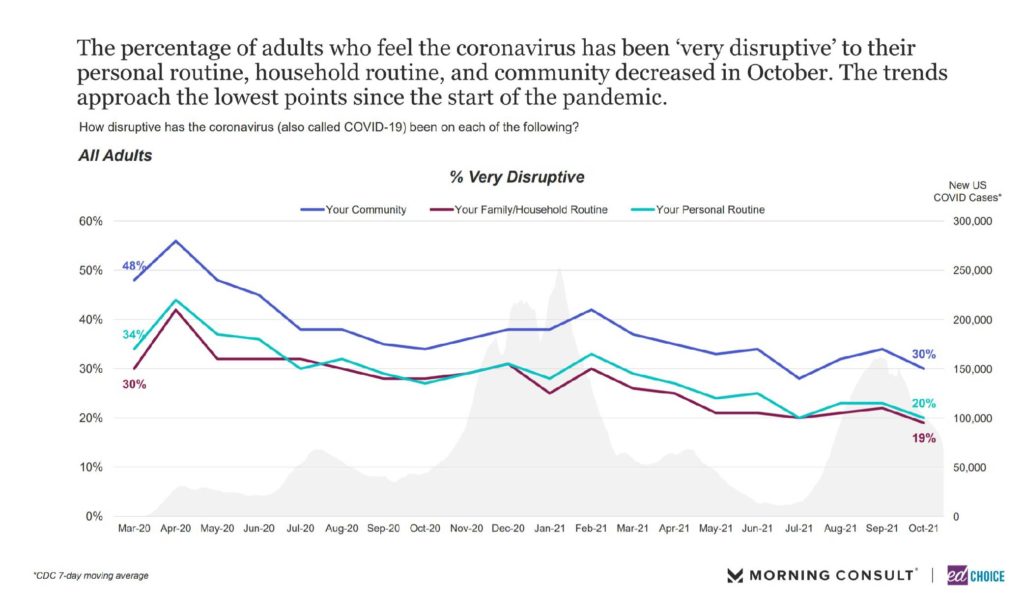
This trend in feelings about the pandemic may extend to the classroom as well. More than two-thirds of parents indicated they were comfortable with their children returning to school right now, a five-point jump from September. At 68 percent, October’s results are the third-highest total since we began asking this question in May 2020.
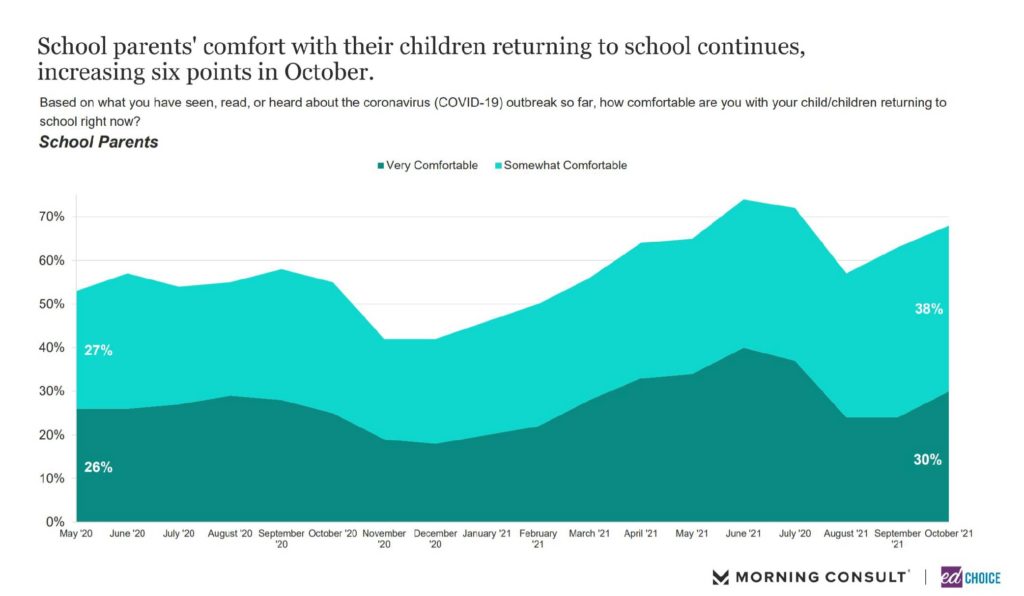
When offered an opportunity to explain why they feel comfortable or uncomfortable with in-person schooling right now, most parents pointed to feelings about the pandemic and how their children’s schools have responded.
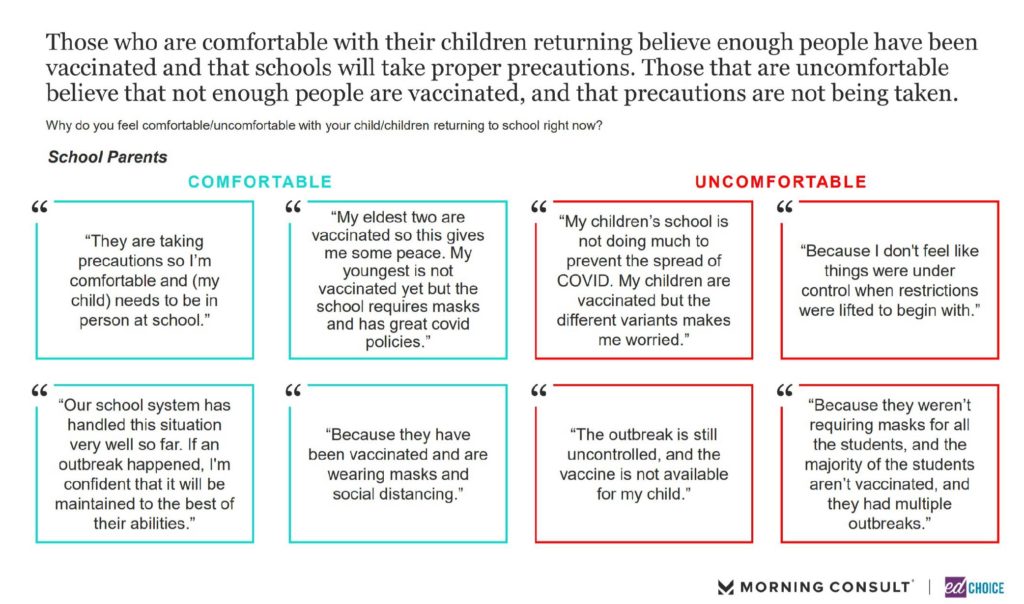
5. … but COVID-19 continues to disrupt some children’s schooling. About a quarter (26%) of parents said they had to quarantine at least one of their children in the last month in response to a COVID-19 outbreak. Parents with children in private school were more likely to have quarantined their children than parents who send their children to public district schools.
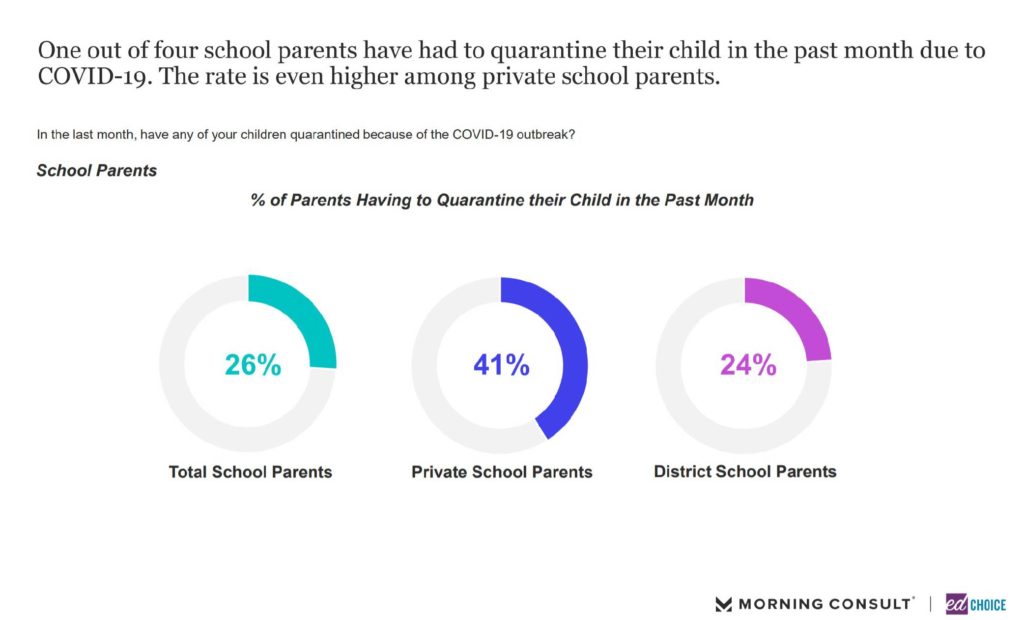
6. Mask mandates became slightly less popular in October, while preferences about vaccine mandates remained fairly steady. After noticeable jumps in favor of mask mandates in educational settings from August to September, the share of adults who think masks should be required at schools and colleges declined by two or three percentage points, depending on the group. Feelings about vaccine mandates were similar to those seen in our September results, though the most significant changes were two- and three-point increases for K-12 students ages 12 and older and ages 5-11, respectively.
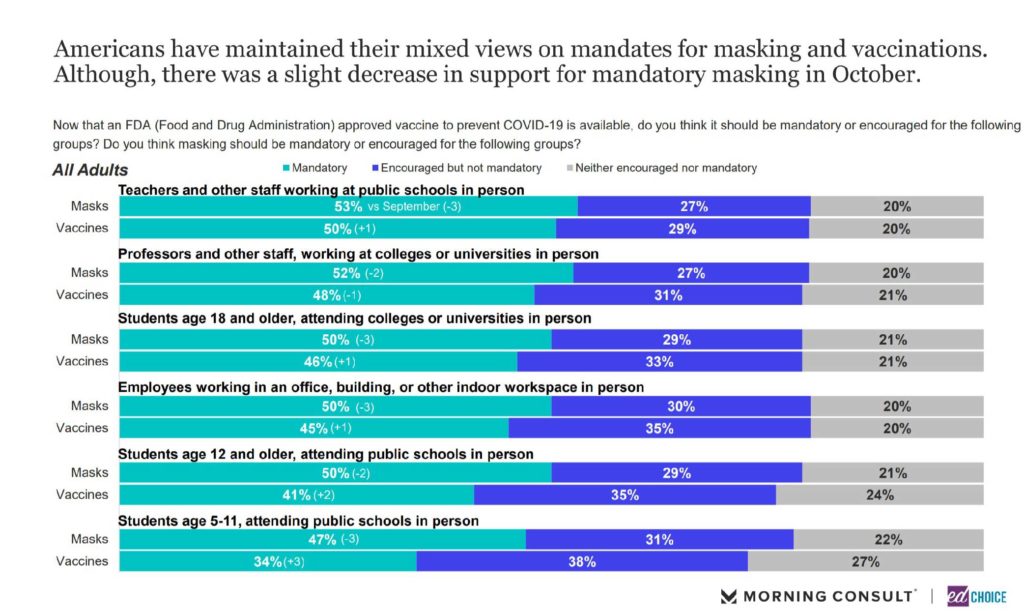
7. Parents with children currently of school age are more likely to have delayed kindergarten enrollment for one of their children than parents of children formerly enrolled in K-12 education. Ten percent of current school parents said they have delayed enrollment of kindergarten for at least one of their children, compared to 6 percent of former school parents (6 percent is roughly equivalent to historical trends). More than a quarter of current school parents who delayed kindergarten enrollment said the pandemic was a factor in making that decision.
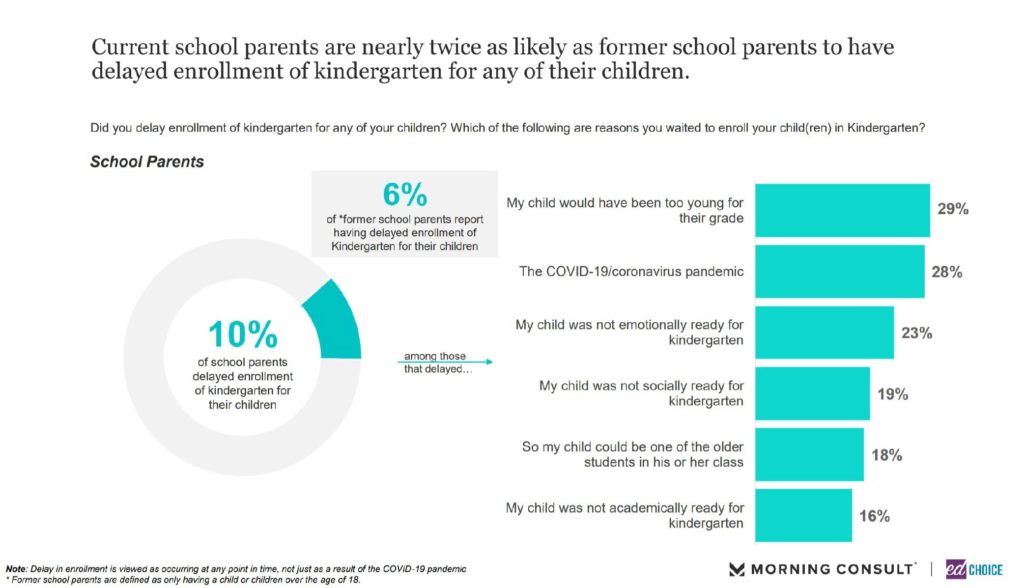
8. Substantial gaps exist between school parents and other adults when it comes to identifying helpful resources for students. We show respondents nine resources a school could offer students to help them succeed in a post-pandemic world, and we ask how helpful they think those resources would be. Current school parents are more optimistic about most resources than adult respondents overall. Both parents and adults overall share a bottom four resources in terms of popularity, but parents’ five most popular resources are distinct. They are most optimistic about school-provided laptops or tablets, with 70 percent thinking such a policy would be helpful for students. Individualized learning plans and school-provided internet were parents’ second- and third-most popular ideas.
